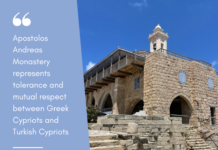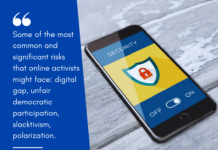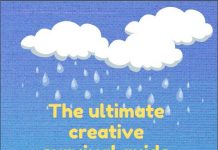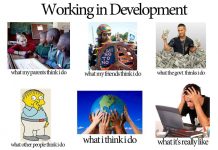This past year and a half has been a year of profound change for me. Once back from my Universal Civil Service in Ecuador I went through a moment of disorientation. What would I have done? How to use the knowledge acquired and the experiences made up to that moment? By chance I found a job as an educator in a residential community for minors and this fortunate occasion opened my eyes to another possible path that I could and wanted to take: becoming a social educator. For this reason I decided to enroll at the University and, at the same time, to look for opportunities to learn on the job.
The case then led to me finding the call for an ESC in Cyprus, in a center for unaccompanied foreign minors. On November 4, 2020 I arrived in Cyprus to carry out an experience as an ESC (European Solidarity Corps) volunteer in a center for unaccompanied foreign minors, that of “Hope For Children” – CRC Policy Center based in Nicosia. That of the reception centers is a context in which I have long dreamed of working and for which, however, I was convinced that I did not (yet) have all the skills and abilities required. This experience with “Hope For Children” – CRC Policy Center is proving to be an incredible educational opportunity, as all the colleagues and department coordinators are providing me with new tools and perspectives every day. On the other hand, it is clear that the reception center itself is conceived as a space for growth and learning for the adolescents who are hosted there. In this article, therefore, in light of my interest in educational practices, I would like to focus on some of the possible levels of educational action at the Nicosia shelter.
A starting point for programming and educational practice that we are taught is the 70:20:10 model. It illustrates the different percentage weight of three areas and types of educational and training processes which, overall, affect who we are, what we know and how we behave on a daily basis. According to this model, only 10% of our being depends on pure training or education, that is, classroom training, professional training or school. 20%, on the other hand, represents the percentage that derives from interactions within the more or less stable social networks in which we are involved. Finally, 70% corresponds to the influence of what we have learned through the more or less conscious experiences that we live continuously day by day. Also, a great weight covers the relationships in which we are involved and their educational values, that affect our behavior as well as our values.
“Hope For Children”, therefore, can do a lot at an educational level, ideally having infinite possibilities to affect that 90% of the holistic training of young people housed in the center and in semi-autonomous homes. It can, in fact, initiate projects and programs that involve the informal and non-formal spheres and can build relationships that intentionally produce learning outcomes. Here lies the importance, in the first place, of all the activities that are proposed, in a more organized form, such as Greek and English courses, or those that are strictly informal but intentional. Secondly, this percentage also includes the workshops that are being planned for the “semi-autonomy boys” – who live in the independent apartments of the semi-independance programme – and which complement the “Rehabilitation Workshop”, which deals with issues such as how to open a bank account and how to receive free health care, but also how to register for the center for employment, how to look for work and accommodation and what other services exist in the area.
But not only activities and workshops are part of a project of this type. The importance attached to routine shoulf be read in this light, too. For example, the Personal Officers of the minors spend time and energy in writing and in doing follow up of the of the daily or weekly program they wrote for their minors. Many times, though, such programs are written by the minors under the guidance of their, that is even much better in an educational perspective. Agostinetto (2017) reports a case study taken from the Italian context that allows a comparison on this aspect, since the “daily activities” are reported by the educators interviewed as other “good practices”:
Daily activities, those that from an external look most characterize the educational communities, which […] help minors to find a recognizable and structuring everyday life, between “rituals and opportunities”, made up of little things, such as “school in the morning , cleaning shifts, lunch, afternoon study, going out into the territory, moments of play ”[…]. While maintaining the recognizability of the system, the trick must also be to create “variations”, periodically varying subgroups, seats at the table, rooms, menus, etc. in order not to feed stale dynamics that do not generate new meanings (p. 68)[1].
Volunteering as an educator in the Nicosia shelter means facing daily challenges and, above all, asking yourself daily questions about your work, your positioning as well as that of the people you work with. In particular, the children we work with are adolescents, a category that is not just personal, since this term identifies, as Cassoni (2011), quoted in Iato (2018)[2], “the one who is growing” and that, for this reason, crosses a borderland.
In order to be possible to establish together with the children, who live such an important stage of their existence, the final objectives, as well as the intermediate steps and the paths to reach them, the shelter is – and must increasingly be – a reality in which the reception processes and educational actions are based on humanization:
Acting humanization means acting interculture, accessing multiple positions in the relationship with the proposed narratives, making the constant effort to accommodate meanings to actions and words, accessing a pluriverse, avoiding a single narrative and a unitary point of view , to allow even contrasting versions, to elicit irreverence, to de-construct the premises of individual persons and of the group in order to bring alternative hypotheses and new possible maps to life (ibid, p. 12).
[1] Agostinetto L., “La pratica educativa con i minori stranieri non accompagnati”, in Studium Educationis, anno XVIII, n. 3 (ottobre 2017), pp. 61-72.
[2] Iato, C., “L’accoglienza dei minori stranieri non accompagnati tra identità incerte e pratiche educative in divenire”, in Educazione interculturale, Trento, Edizioni Centro Studi Erickson, vol. 16, n. 1, 2018.

















